They say: "An electric revolution."
We say: "Finally, an electric bike offering performance and range."
Top speed: 95 mph. Range: 137 miles. Recharge time: one hour. If you’ve been following the development of electric motorcycles, these stats make a strong impression. Not only are they tantalizingly close to those of conventional, gas-powered motorcycles, they’re a major step up from existing e-bikes. They are, not coincidentally, the important figures for one of Zero Motorcycles’ 2013 models—the range-topping Zero S.
Founded in 2006 by former NASA engineer Neal Saiki, Zero has accelerated e-bike technology dramatically. From its start in 2009, selling bikes with 43-mile range and a top speed of 67 mph, Zero in 2012 produced machines capable of going 114 miles on a charge and accelerating up to 88 mph. Such dramatic improvement over a short period of time has been rewarded in the marketplace: Zero has sold roughly 3200 electric motorcycles since 2009—and that’s just the start. Last year, the company boosted production to 1000 bikes annually and expects to double that volume in 2013.
Among its 83 employees in Santa Cruz, CA—28 are R&D; engineers with another 12 workers on the assembly line—is Abe Askenazi, previously top tech at Buell Motorcycles and Erik’s right-hand man. Askenazi brings strong product-development chops, and has worked diligently to improve performance, increase range, and reduce recharging time for all Zero models. He recognizes that performance and convenience similar to a gas bike are the keys to success with electrics.
To that end, Askenazi and his team have re-engineered the range by installing an all-new Z-Force electric motor created in-house by Canadian designer Ryan Biffard, and funded by a $900,000 grant secured from the California Energy Commission. This compact, brushless motor is an “inside-out” design with the windings encircling permanent magnets attached to the rotor. The windings, which carry the electric current and get hot in use, can then be placed on the periphery where they’re easier to cool—no fans or liquid-cooling circuits required.
There are two variants, the wider and more powerful 75-7 motor (40 pounds) fitted to the S and DS bikes, and a slimmer, less potent 75-5 version that’s 10 lbs. lighter. There are also two different Sevcon controllers used in the Zero lineup, one rated for 250 amps and the other for 420. Combining the bigger engine with the fatter controller in the S and DS models delivers a claimed 54 horsepower at 4300 rpm and peak torque of 68 lb.-ft. This combination represents a 36 percent increase in power density from the 2012 spec.
Still more variations are in play: all 2013 Zeros can be had with one of two battery packs, made up of Zero’s own lithium-ion, 102-volt pouch-cell batteries. For the S and DS, the packs are rated at a maximum of 11.4 and 8.5 kilowatt-hours (kWh), an increase from 9 kWh and 6 kWh, respectively. According to the company, these batteries are good for 2500 recharge cycles, which gives an effective battery pack lifetime of 308,000 miles for the bigger version. If that proves to be true, the battery pack could outlive the rest of the bike, or even its owner.
To a great degree, vehicle range and top speed are dependent upon battery capacity. (Top speed is more a function of current capacity and motor torque, but for a road bike with a small battery pack it’s smart to limit power to improve range.) In the Zero S, the 11.4 kWh pack provides 137-mile range from a single charge based on the EPA’s City Commuting urban cycle. The Zero S with the smaller, 8.5 kWh pack can go 103 miles in the same test but is lighter—a claimed 350 lbs., 30 lbs less than the 11.4 kWh model. Range is a moving target, you might say: Claimed range declines to 85 miles (larger battery pack) and 64 miles (the smaller pack) in the EPA Highway Commuting suburban cycle, and to 70 and 53 miles in the Highway cycle.
All Zeros come with a 1.3 kW on-board charger fed from a common 120-volt AC outlet. Using only this system, the larger pack recharges to 95 percent in 7.4 hours, while the smaller pack recovers in 5.5 hrs. By using the optional CHAdeMO adapter—CHAdeMO is the standard system used on electric cars and supported by public charging stations—charge time is dramatically shorter. How about “zero” to 95 percent in less than an hour?
In the week of their world debut, I was able to spend a full day riding the 2013 Zero S and DS through the hills and valleys near the company’s 40,000-square-foot factory. Incidentally, another “first ride” article you may have seen was the result of a journalist merely riding the bikes up and down an alley behind the factory.
To boot up the Zero you simply turn the ignition key, then press the kill switch on the right handlebar to illuminate the green-for-go light above the dash, wait a couple of seconds for the controller to scroll through its various settings, then twist and go. Direct drive is perfectly suited to the electric motor’s diagonal power curve and horizontal torque curve. Acceleration with the larger battery pack and new motor is impressive, a far cry from the relatively limp-wristed getaway provided by last year’s Zero S. In urban conditions you’d expect the Zeros to shine, and indeed there’s simply nothing to match such a well-balanced e-bike with such responsive throttle control. But the big surprise is the Zero’s midrange roll-on acceleration, which is both muscular and controllable. Cranking the throttle wide open traveling at 60 mph produces the kind of surge forward that any card-carrying Ducati owner would be happy to experience.
The S and DS models get a new aluminum frame this year that makes both feel more substantial when you sling a leg over them—especially the S, which previously felt rather diminutive, a bit like a Kawasaki Ninja 250R. Now, with its 55.6 inch wheelbase and 31.3 in. seat height, the Zero S feels comparable to midsize bikes like the, Triumph Street Triple or Ducati 696 Monster.
On the road, this updated chassis helps the S and DS feel like “real” motorcycles and less like generic transportation devices. Even the standard, fairly narrow IRC rubber gave good-enough grip on a warm California fall day to deck the sidestand on the left and nip the short hero tab on the right footpeg. Within the context of the way the Zero S will be ridden, this is more than adequate.
The same can be said for the updated brakes. A Nissin two-piston caliper gripping the 310mm floating front disc is part of the 2013 upgrade, joined by a single-piston rear and 220mm fixed disc operated by a conventional right-foot pedal, rather than a lever on the left handlebar, scooter-style. Refreshing the hardware resolves the problem I complained of when riding the 2012 models, equipped with Hayes brakes that offered insufficient bite. With the Nissins, a single finger on the front brake lever is now all you need to slow down most circumstances.
The revised brakes get help from regenerative braking, which turns the motor into a generator to create “engine” braking. Using the bike’s momentum to drive the motor helps recharge the batteries to bolster range. Two regen modes are available: One comes into play when you simply back off the throttle, and you can indeed feel some residual engine braking when you do so. But there’s also a sensor that monitors use of the front brake. When you use that brake, the controller dials in additional regen.
One of the more interesting and forward-looking pieces of technology on the Zero is vehicle fine-tuning via smartphone. The Zero communicates with an iPhone or Android mobile device via a Bluetooth link and a specialized Zero Motorcycles app. Once paired with the bike, the smartphone can be used to monitor the precise state of charge and real time power usage while riding. You can dial up more or less regen or alter any one of a number of other performance parameters. There’s even an optional mount you can buy to clip your phone to the handlebars.
Dynamically, the Zero S is generally quite good. The 38mm inverted fork from Taiwanese pit-bike builder Fastace is fully adjustable, and works quite well. The Taiwanese cantilever rear shock is much less satisfactory, with a very harsh response to bumps and poor ride quality. Rear wheel travel is supposedly as much as 5.8 inches, but you have a hard time believing that as you’re jostled around over bumps. It’s bad enough that you start using the Zero’s sharp, responsive steering to zig-zag your way along city streets merely in an effort to avoid riding over manhole covers and other typical urban obstacles.
Given the improvements in range, performance, and capability, the Zero S provides a measurable upgrade in value even as the base price has risen for 2013. The updated Zero S with the 11.4 kWh battery pack runs $15,995, up $2000 from the 2012 model with the ZF9 (9 kWh) pack. The S with the smaller, 8.5 kWh pack costs $13,995, which makes it the same price as last year’s top-line model. Zero DS prices are the same, while the new Zero FX and MX run $9495 to $11,990, depending on battery pack, while the entry-level XU costs $7995 with a 2.8 kWh pack and $10,490 with a 5.7 kWh pack. Something to consider when digesting those prices is that the bikes run for pennies a mile on home electricity, and may benefit from government subsidies. What’s more, all of the Zero models are mechanically uncomplicated, and so should have good reliability and low running costs.
Forget for a moment all the hype about reducing energy costs and the stuff about saving the planet—after five minutes aboard one of the new Zeros you’ll have a smile on your face. Not because you’re sipping electrons instead of fossil fuels, but because you’re having a great time on an exciting and unique motorcycle.
EVOLUTION
The top-of-the-line Zero S gets a new, "inside-out" brushless motor, larger-capacity but lighter batteries, a redesigned frame, new brakes, suspension components, and more.
RIVALS
Brammo Empulse…ah, well…that's it
VERDICT 4 out of 5 stars
Higher-tech and better performing than ever, the Zero S approaches parity with small gas-powered bikes.










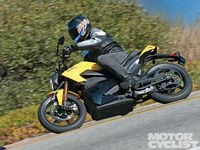


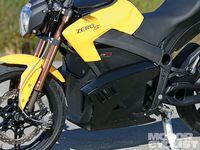
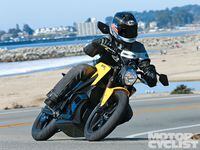

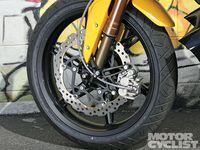
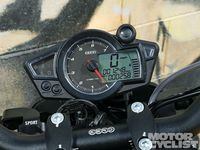
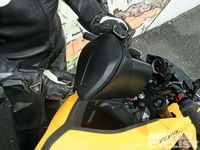
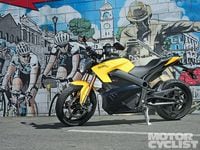
/cloudfront-us-east-1.images.arcpublishing.com/octane/HXOUJXQWA5HBHGRO3EMJIGFMVI.jpg)

/cloudfront-us-east-1.images.arcpublishing.com/octane/3TIWWRV4JBBOLDVGRYECVVTA7Y.jpg)
/cloudfront-us-east-1.images.arcpublishing.com/octane/KIX5O23D5NAIBGFXBN3327DKZU.jpg)
/cloudfront-us-east-1.images.arcpublishing.com/octane/7GJYDUIPXRGMTMQKN6ONYOLBOU.jpg)
/cloudfront-us-east-1.images.arcpublishing.com/octane/MUQLOVLL2ZDGFH25ILABNBXKTI.jpg)
/cloudfront-us-east-1.images.arcpublishing.com/octane/TNOU5DNE2BC57MFPMGN2EIDXAM.jpg)
/cloudfront-us-east-1.images.arcpublishing.com/octane/GTCXACQGJ5HAPDTGWUQKDEH44E.jpg)
/cloudfront-us-east-1.images.arcpublishing.com/octane/S35YGSEMEZB4BLTDJTSZPF4GLA.jpg)
/cloudfront-us-east-1.images.arcpublishing.com/octane/5UOT6HPX2JFMRJAX6EH45AR4MQ.jpg)
/cloudfront-us-east-1.images.arcpublishing.com/octane/OKWOJWAKP5EP3OACCRRWPCIX2Q.jpg)
/cloudfront-us-east-1.images.arcpublishing.com/octane/2WF3SCE3NFBQXLDNJM7KMXA45E.jpg)
/cloudfront-us-east-1.images.arcpublishing.com/octane/G4MG6OUCJNBSHIS2MVVOTPX65E.jpg)
/cloudfront-us-east-1.images.arcpublishing.com/octane/IIGGWFOTOJGB7DB6DGBXCCMTDY.jpg)
/cloudfront-us-east-1.images.arcpublishing.com/octane/QSTCM6AVEZA5JJBUXNIQ3DSOF4.jpg)
/cloudfront-us-east-1.images.arcpublishing.com/octane/U4I7G625B5DMLF2DVIJDFZVV6M.jpg)
/cloudfront-us-east-1.images.arcpublishing.com/octane/B6XD6LS6IVCQPIU6HXDJSM3FHY.jpg)
/cloudfront-us-east-1.images.arcpublishing.com/octane/ICL63FEDDRDTTMINYICCEYGMDA.jpg)
/cloudfront-us-east-1.images.arcpublishing.com/octane/FCGZHQXRBZFLBAPC5SDIQLVF4I.jpg)
/cloudfront-us-east-1.images.arcpublishing.com/octane/WNOB6LDOIFFHJKPSVIWDYUGOPM.jpg)

/cloudfront-us-east-1.images.arcpublishing.com/octane/X33NU3E525ECRHXLNUJN2FTRKI.jpg)
/cloudfront-us-east-1.images.arcpublishing.com/octane/6KKT5NNL2JAVBOXMZYS5ZO76YA.jpg)
/cloudfront-us-east-1.images.arcpublishing.com/octane/J5RKG5O455GMPGQRF2OG6LRT7A.jpg)